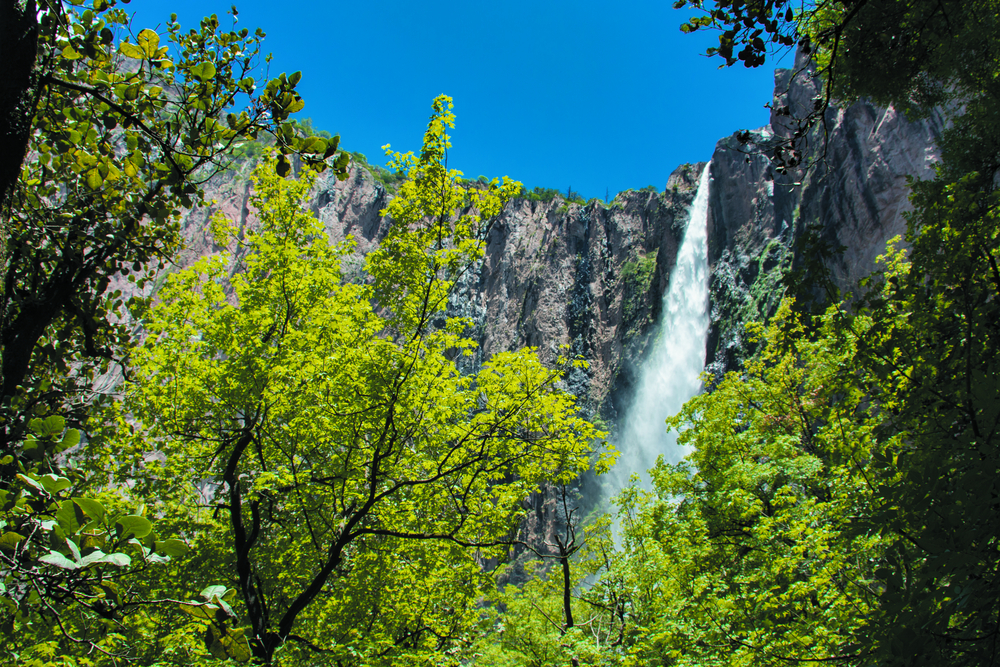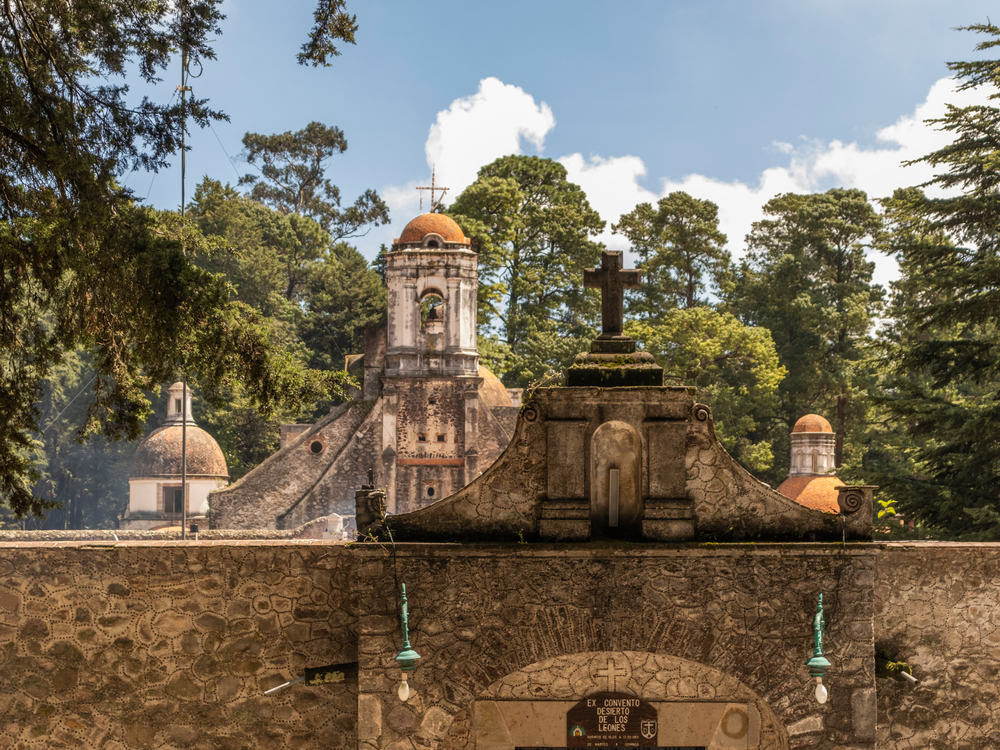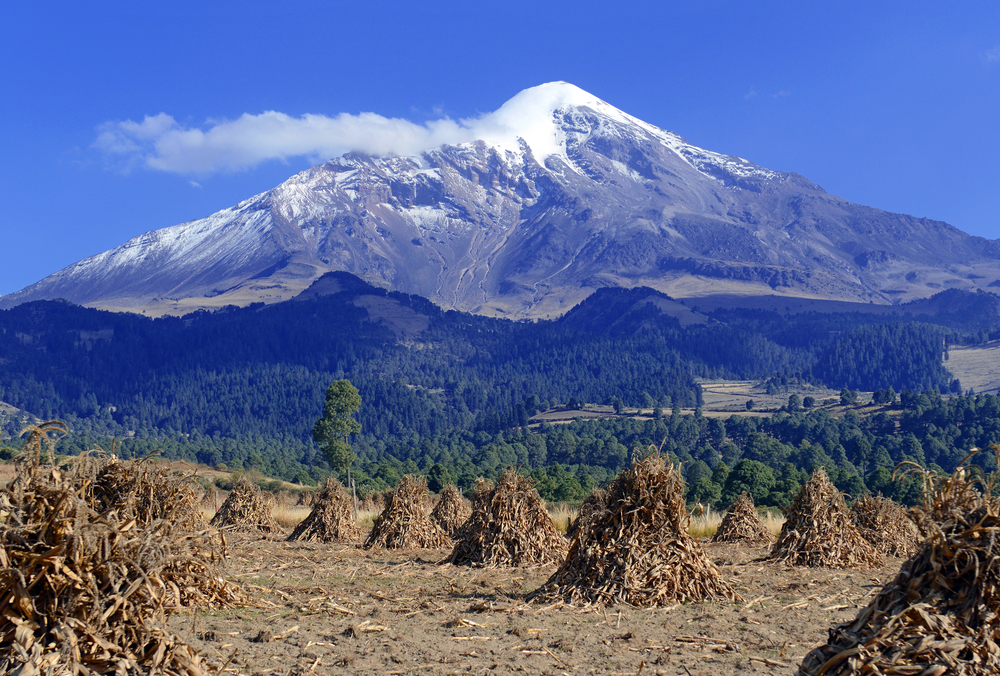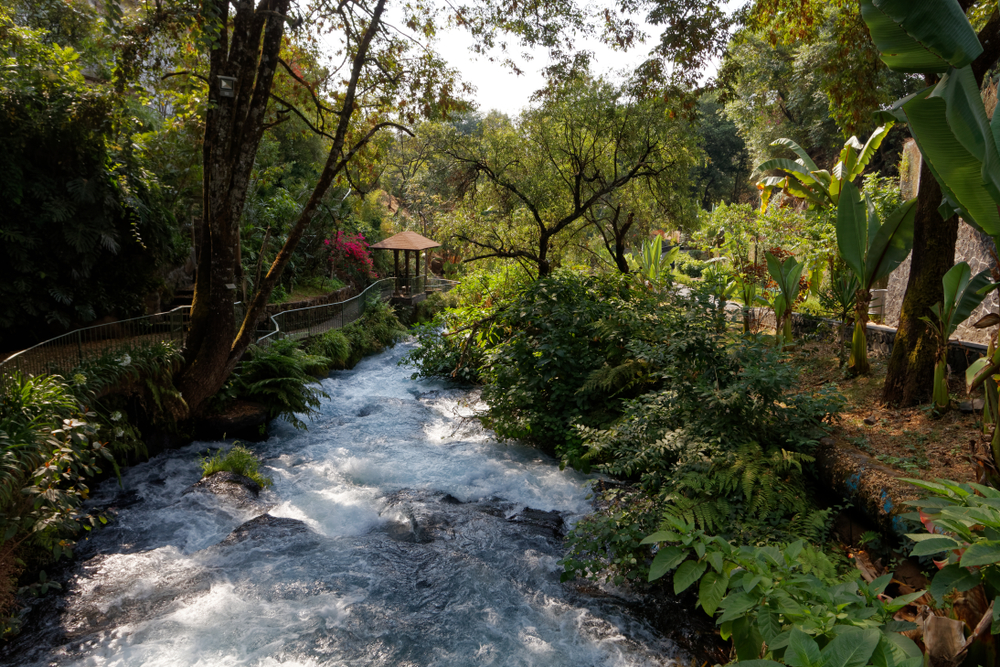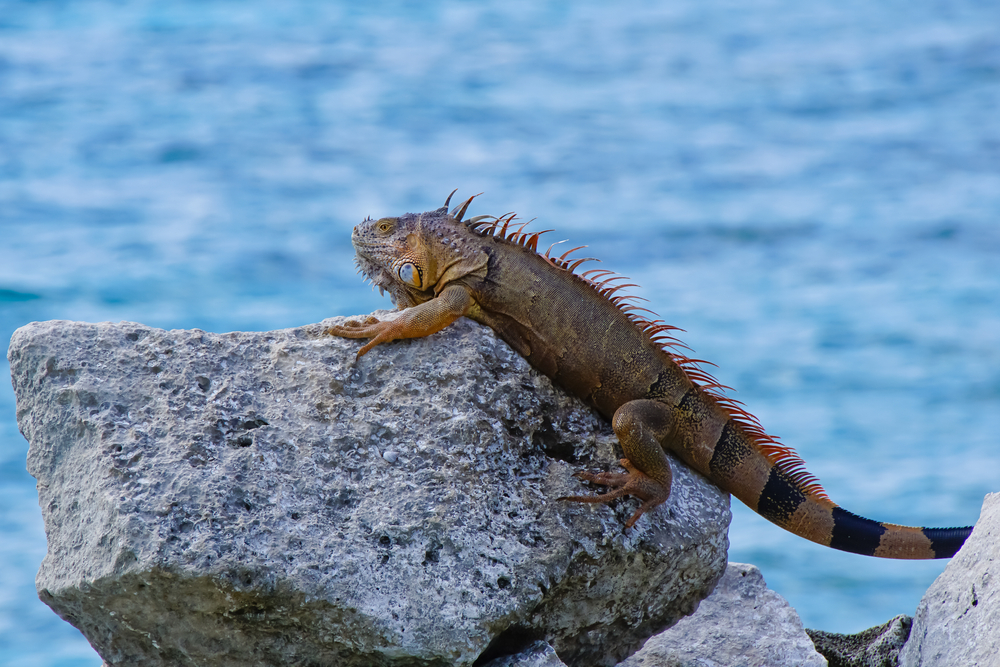Basaseachic Falls Overview
Basaseachic Falls National Park, known as Parque Nacional Cascada de Basaseachic in Spanish, is located in the Sierra Madre Occidental in the state of Chihuahua, Mexico.
Covering an area of approximately 23 square miles (around 60 square kilometers), the park is home to Basaseachic Falls, one of Mexico’s tallest waterfalls, plunging 807 feet (246 meters) into the Candameña Canyon. The rugged landscape is characterized by steep cliffs, deep canyons, and pine-oak forests, making it one of the most visually striking regions in northern Mexico.
The terrain is shaped by volcanic activity and erosion, creating dramatic rock formations and sheer escarpments that define the canyon system. The Candameña River feeds the waterfall, but its flow varies significantly throughout the year, with the falls appearing most powerful during the rainy season.
The vegetation in the park is typical of the Sierra Madre Occidental’s highland forests, consisting of extensive stands of pine and oak trees. In the higher elevations, juniper and fir trees can be found, while the canyon floors and lower slopes feature a mix of desert shrubs and cacti.
The park’s varied elevation and climate create diverse microhabitats, supporting a wide range of plant life. The contrast between the lush, forested plateaus and the more arid canyon depths adds to the park’s scenic appeal.
The park is home to a diverse array of wildlife, including some of Mexico’s most iconic species. Among the mammals that roam the region are cougars, bobcats, and white-tailed deer. The elusive jaguar has also been spotted in the remote parts of the park, highlighting its importance as a protected habitat. Smaller mammals such as ringtails, squirrels, and skunks are commonly seen.
The birdlife is equally impressive, with golden eagles, peregrine falcons, and the strikingly colorful elegant trogon among the notable species. The thick forests and canyon walls provide ideal nesting sites for raptors, while the undergrowth supports a variety of songbirds and hummingbirds.
One of the main attractions of Basaseachic Falls National Park is the waterfall itself, which draws visitors for its breathtaking height and the stunning backdrop of the Candameña Canyon. Several viewpoints, such as Mirador La Ventana and Mirador Piedra Volada, offer spectacular panoramic views of the falls and surrounding cliffs.
The park is a favorite destination for hikers, with trails that wind through pine forests and descend into the depths of the canyon. Some trails provide access to the base of the falls, offering an up-close perspective of the towering cascade. Rock climbing and rappelling are popular among adventurers, given the rugged cliffs and dramatic drop-offs.
Visitors can also explore other natural wonders within the park, including the smaller yet equally scenic Candameña Falls. The surrounding region is rich in Rarámuri (Tarahumara) culture, and visitors may encounter indigenous communities that maintain traditional ways of life in the mountains. Birdwatching, photography, and camping are among the other activities enjoyed within the park.
Conservation efforts focus on preserving the park’s fragile ecosystems, particularly in protecting wildlife from habitat loss and preventing deforestation in the surrounding areas. Illegal logging and human encroachment pose challenges, but government and local conservation groups are working to maintain the integrity of the park.
The protection of large predators such as jaguars is a key success in the park’s conservation efforts, as their presence indicates a healthy and functioning ecosystem. Basaseachic Falls National Park remains one of northern Mexico’s most significant natural treasures, offering visitors a chance to experience its breathtaking landscapes and remarkable biodiversity.








































































